Best screening plants: 12 plants to hide garden boundaries and create privacy
The best screening plants can help disguise ugly features, create a more private plot and even define different zones in the garden
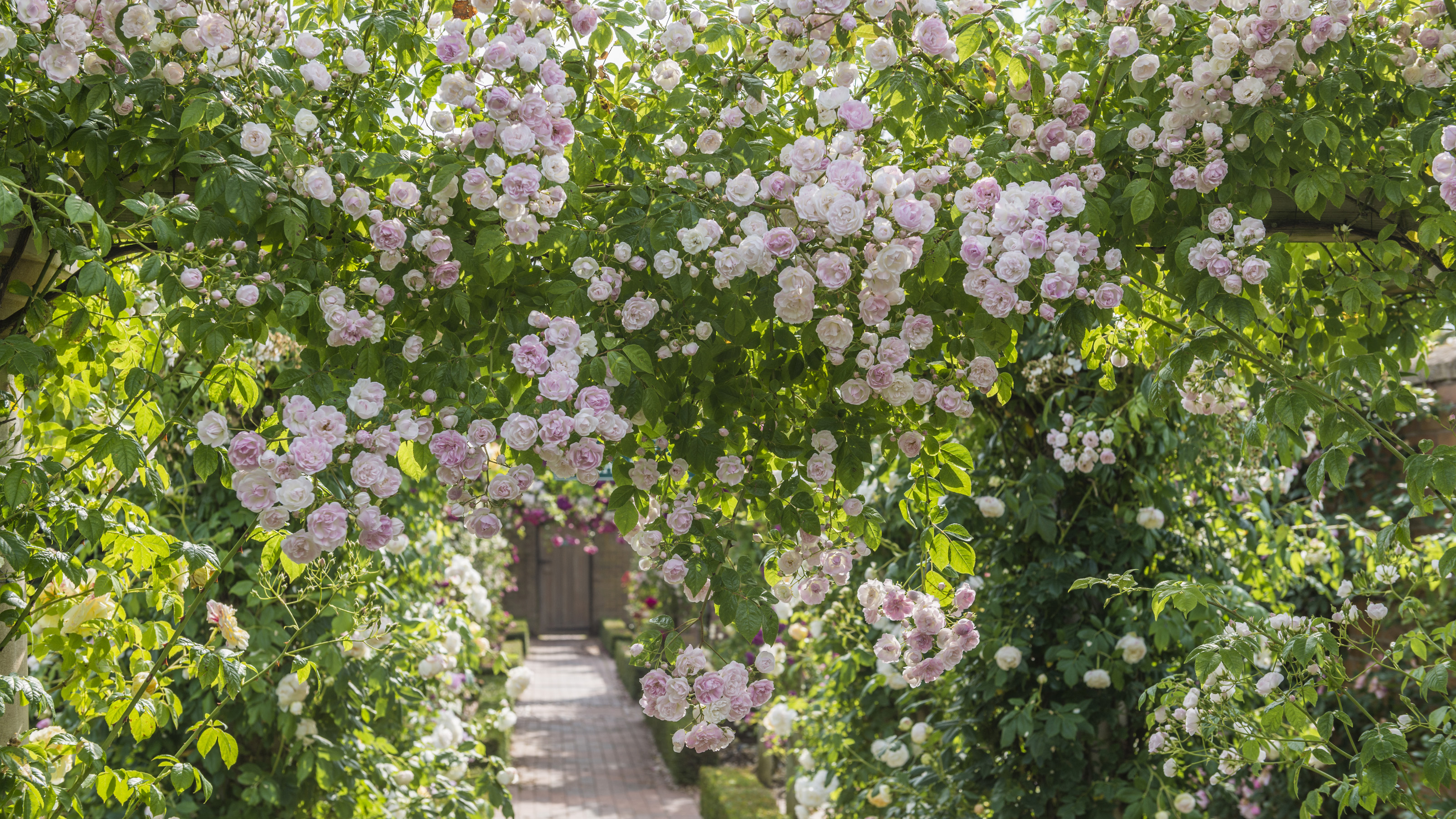
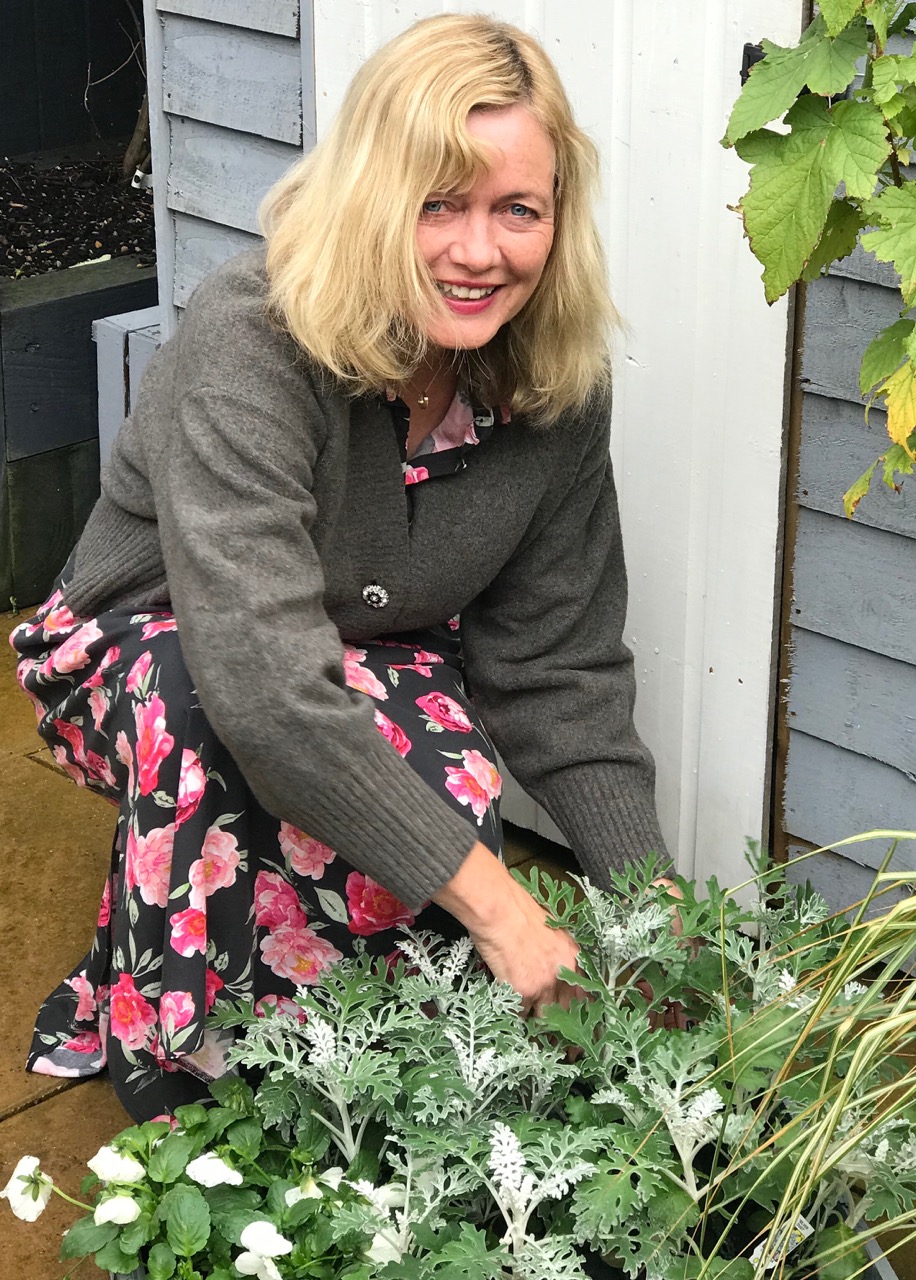
Some areas of the garden are best hidden away and that's why the best screening plants can be very useful. A row of bins, that messy corner where broken pots and bags of compost accumulate or maybe the neighbors’ ugly fence, are just some of the features that might be better covered up with a living wall of green.
Clever use of screening plants can also create privacy in an overlooked space. Another benefit is that they add interest to a small plot when they can be used to create interconnected spaces. A bland square or plain rectangular space could be divided by a row of grasses. A trellis fence makes an inexpensive feature when it is situated halfway across the garden and smothered with roses or clematis. This partial screening creates an inviting glimpse into the area beyond, tricking the eye into thinking that the garden is larger than it really is.
The plant you choose depends on the reason for the screen. A semi-transparent row of planting might work in some spaces to break up a harsh boundary, but complete concealment might be preferable if you're looking to cover up unattractive garden fence ideas, for example. Our advice will help you find the best solution for your space.
Best screening plants: 12 ways to hide features and divide your space
Whether you're looking to conceal unsightly garden boundaries or subtly divide a space, the best screening plants can be a useful addition to your garden scheme.
Best screening plants for creating a dense green screen
If you want to completely cover a fence or wall with lots of greenery, these practical choices are ones to add to your planting list.
1. Star Jasmine
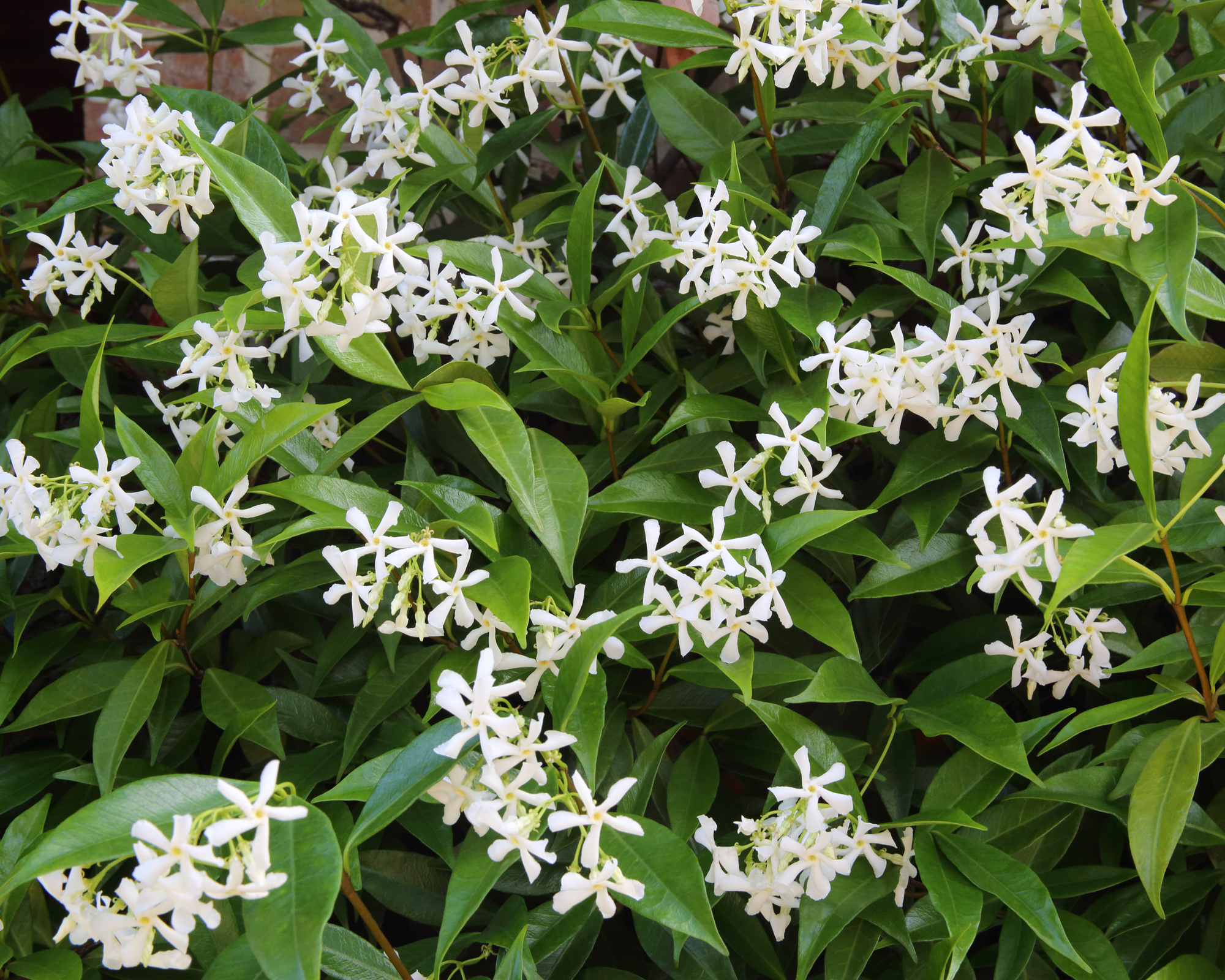
Evergreen foliage means that this pretty shrub, trachelospermum jasminoides, is a great choice for screening any trellis ideas that are in part shade. 'It is vigorous, with dense, even coverage,' say the experts at Squires Garden Centres.
The starry clusters of flowers smell sweet on hot summer nights, and in winter, the leaves will turn bronze, but they won’t drop.
Star jasmine is a twining climber, which grows about 10-20cm a year, so it will add steady coverage, but won’t run riot. Plant in the ground or in a container and it’s perfect to provide seclusion near outdoor seating, which means you can take full advantage of its glorious fragrance.
Container-grown jasmine needs a large pot and frequent watering to keep the soil moist. In late winter or early spring, add fertilizer and mulch with compost.
2. Golden Hop
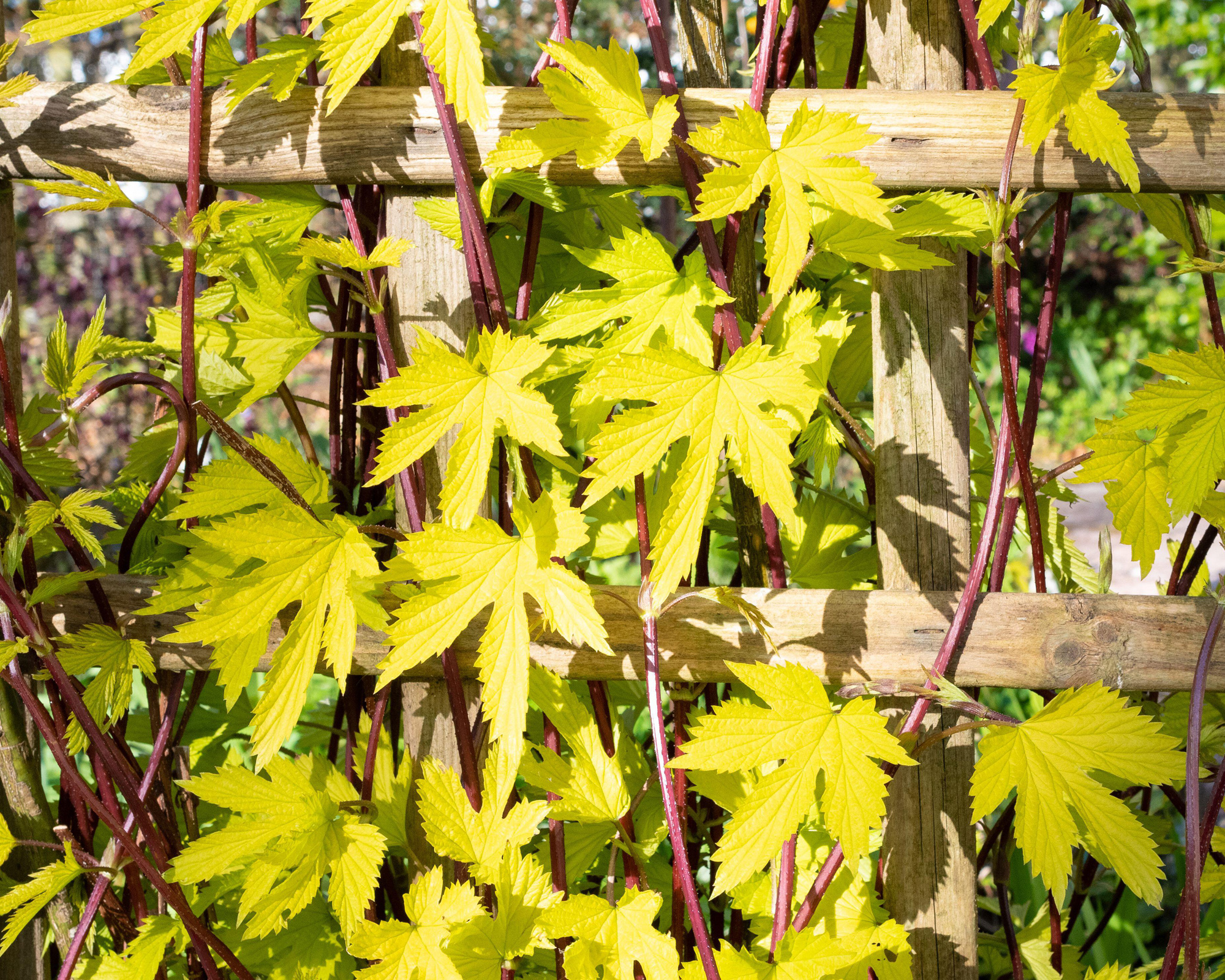
If you need fast-growing summer screening, then Humulus lupulus ‘Aureus,’ or Golden Hop, is your plant. It’s a perennial twining climber, with zingy yellow-green foliage and trumpet-shaped flowers in summer.
Grow it up and over your pergola ideas, or up a large fence or wall and it will reach as tall as 6m in one season. For this reason, make sure that your space is not too small, or it could be overwhelming.
Grow in full sun and cut back in late winter or early spring for strong, fresh growth.
3. Bamboo
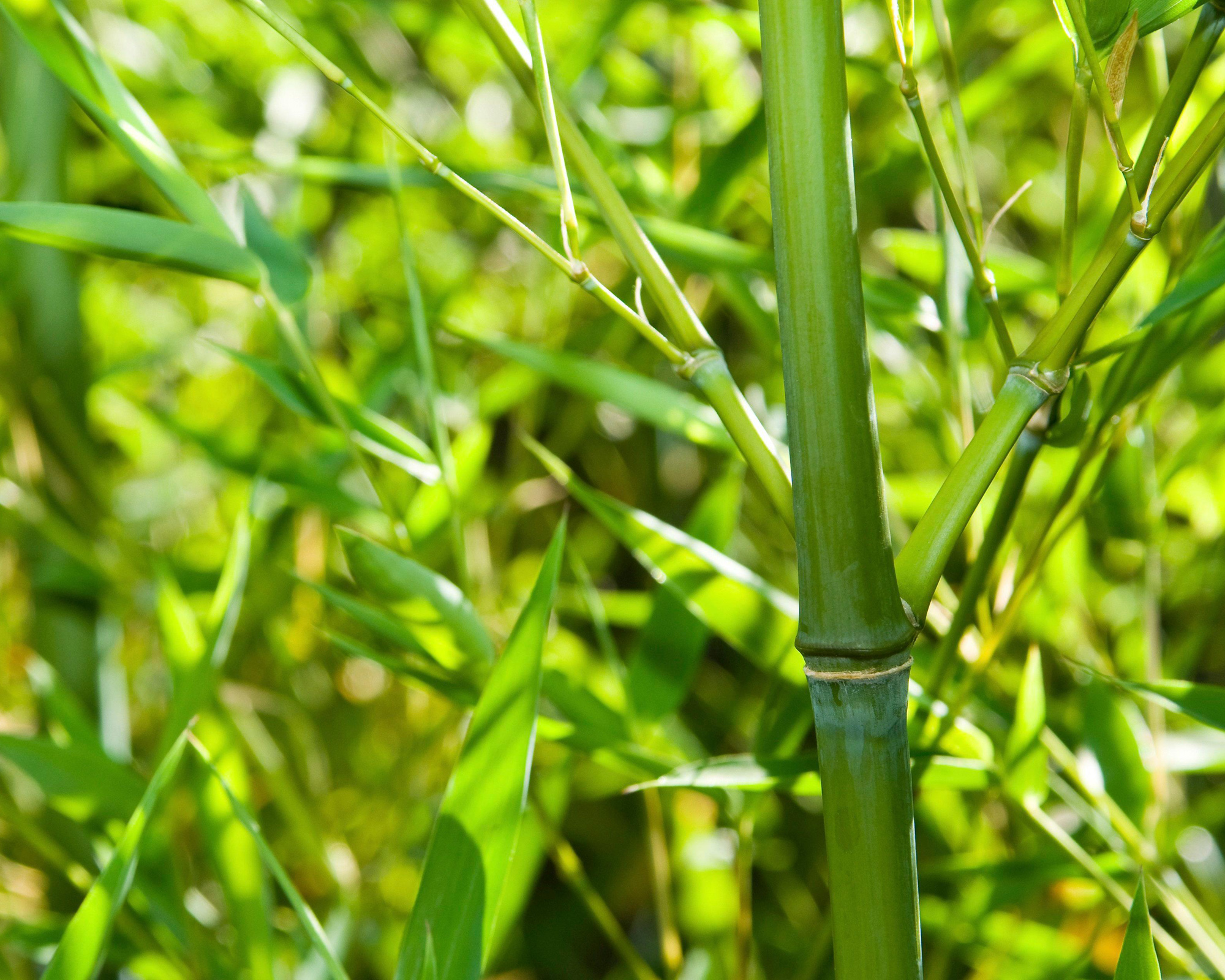
The experts at Squires recommend Phyllostachys Aurea, or golden bamboo, as one of their top screening plants, explaining that: 'it has a wonderfully vibrant golden stem with evergreen foliage. At first the stems start green, then they mature to a bright golden yellow.'
It grows quickly and has a contemporary look, so it's a top choice if you're a fan of modern garden ideas and need something that offers fast coverage. In fact, it is so enthusiastic that it may need containing if planted in the ground. This bamboo can top 7m and spread 4m after 10 years of growth.
Plant in full sun or partial shade in a moist but well-drained soil. Keep watering during the growing season, as bamboos are thirsty plants.
You'll find plenty more expert tips on how to grow bamboo in our dedicated guide.
4. Honeysuckle
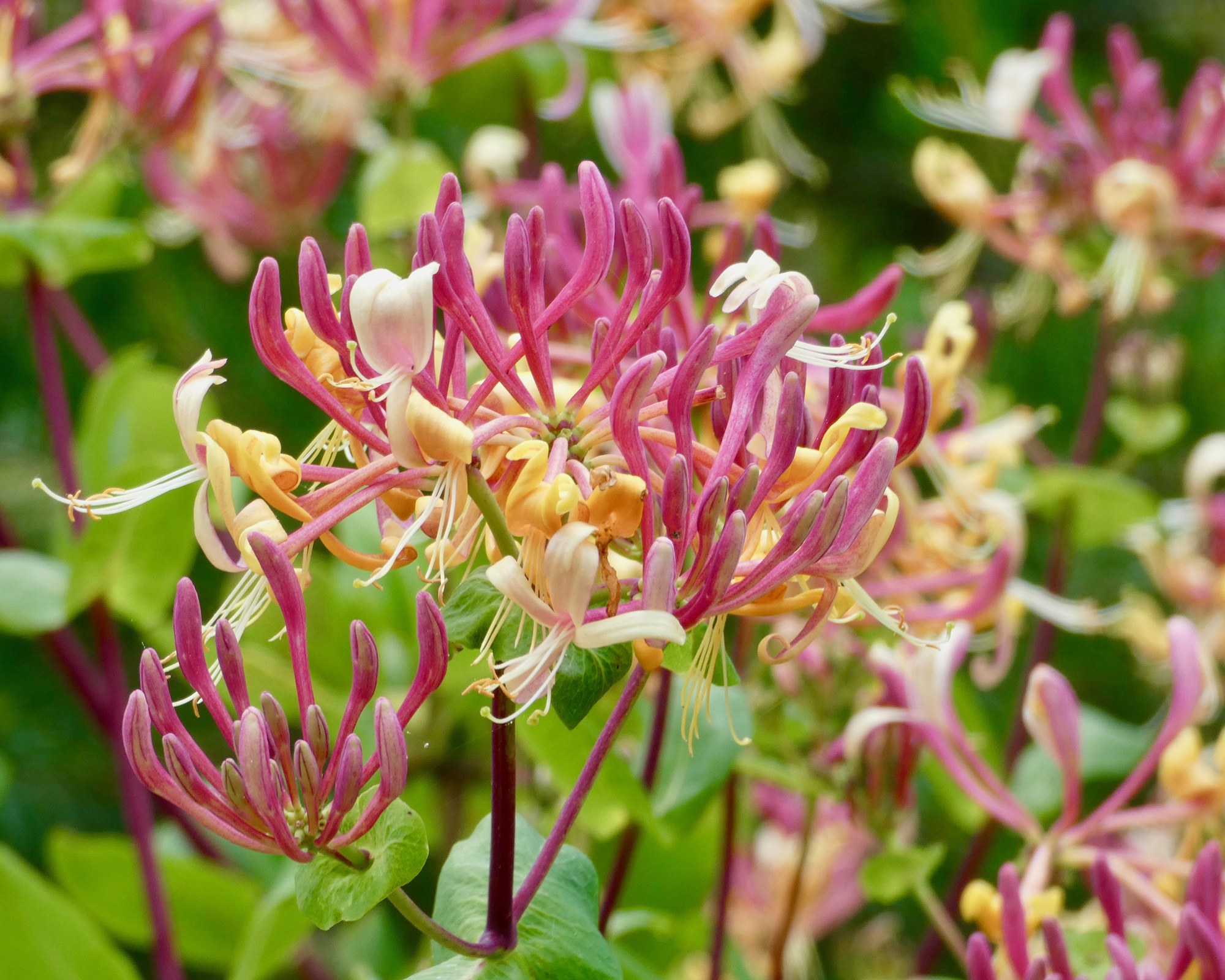
Learn how to grow honeysuckle and you'll have a wonderful way to screen off a less-than-lovely garden shed, or it could be used to soften a harsh new fence or trained up a trellis to create some much needed garden privacy.
Many honeysuckles are semi-evergreen, which means they will lose some of their leaves in winter, but they do retain a partial screening effect. They grow between two to three meters in a year and flower from summer to autumn.
These are easy-care plants, which thrive in light shade. Cut back the flowered stems by a third in late summer, and then tidy up again in late winter. Try ‘American Beauty’ a hardy, semi-evergreen, for its gold and rose scented flowers and fast-growing habit (ultimate height is 5m).
5. Cherry Laurel (Prunus Novita)
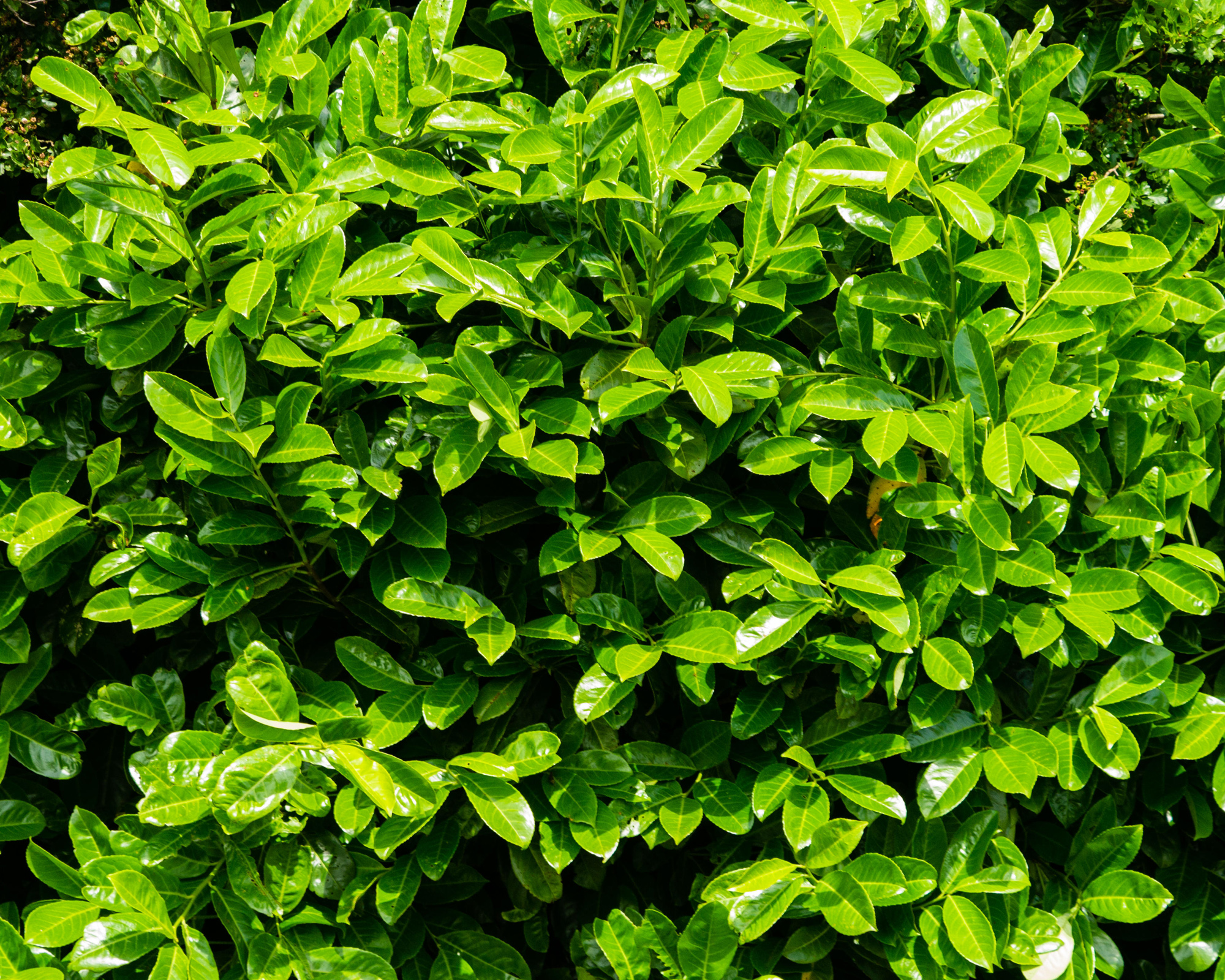
Another of the best screening plants, as recommended by the expert team at Squires, is a new variety of the popular evergreen Cherry Laurel. It’s a good one for people who live in areas with harsher winters as it is resistant to cold weather.
'It has lovely, glossy, mid-green ovate leaves, and is a staple screening plant in many gardens,' say the experts. It is easy to maintain with a light prune or a trim to keep its shape.
Give the shrub a nitrogen-based feed in the growing season to keep it looking fresh, and plant it in free draining but moist soil. After 10 years, the ultimate height will be 4m and the spread is 4m.
Best grasses to use as screening plants
Even the smallest backyard can benefit from a relaxing seating area, with a strong but informal barrier achieving a sense of separation. Including grasses in your container gardening ideas or adding them to a slim border can be an effective way of achieving this.
Opt for taller varieties with feathery plumes and bleachy colours. Although they are perennials and die off during the winter, the fronds can be retained until February when they need to be cut back. This means that you get the screening effect almost year-round.
1. Calamagrostis ‘Karl Foerster’
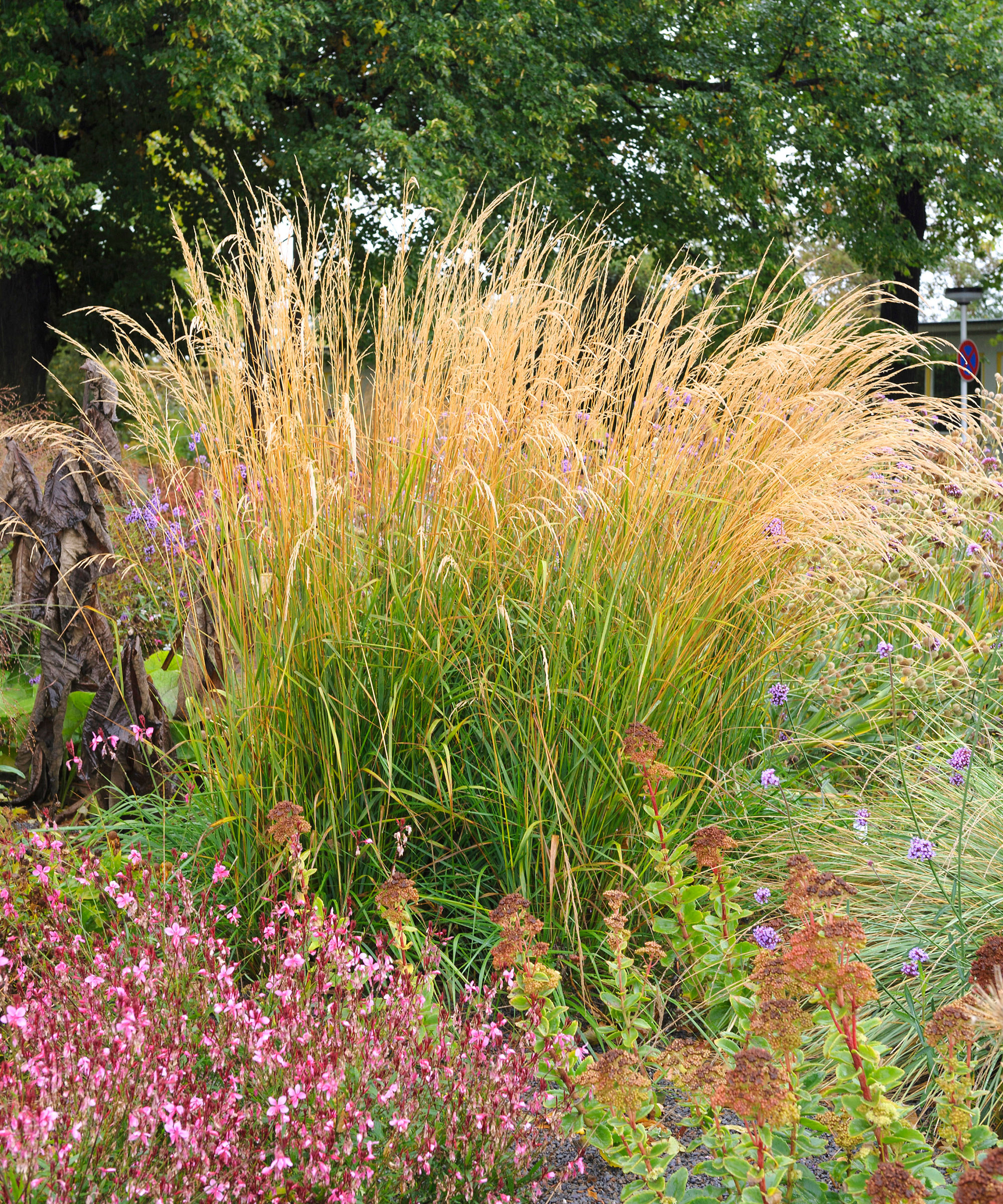
Tall and upstanding, this grass can be planted en masse in garden borders to form a feathery screen, or lined up in pots in groups. The green shoots appear in early spring, followed by plume-like flowers which are green, fading to buff/blonde.
It is very easy to grow, it just needs cutting down to the ground in February. Don’t cut it any earlier, as the screening effect will last over winter, and it looks very pretty when the fronds are dusted with white frost. Grows to a height of around 2m if it’s kept well-watered. Plant in a large pot in full sun or partial shade.
There's plenty more advice on how to grow ornamental grasses in our guide too.
2. Pennisetum
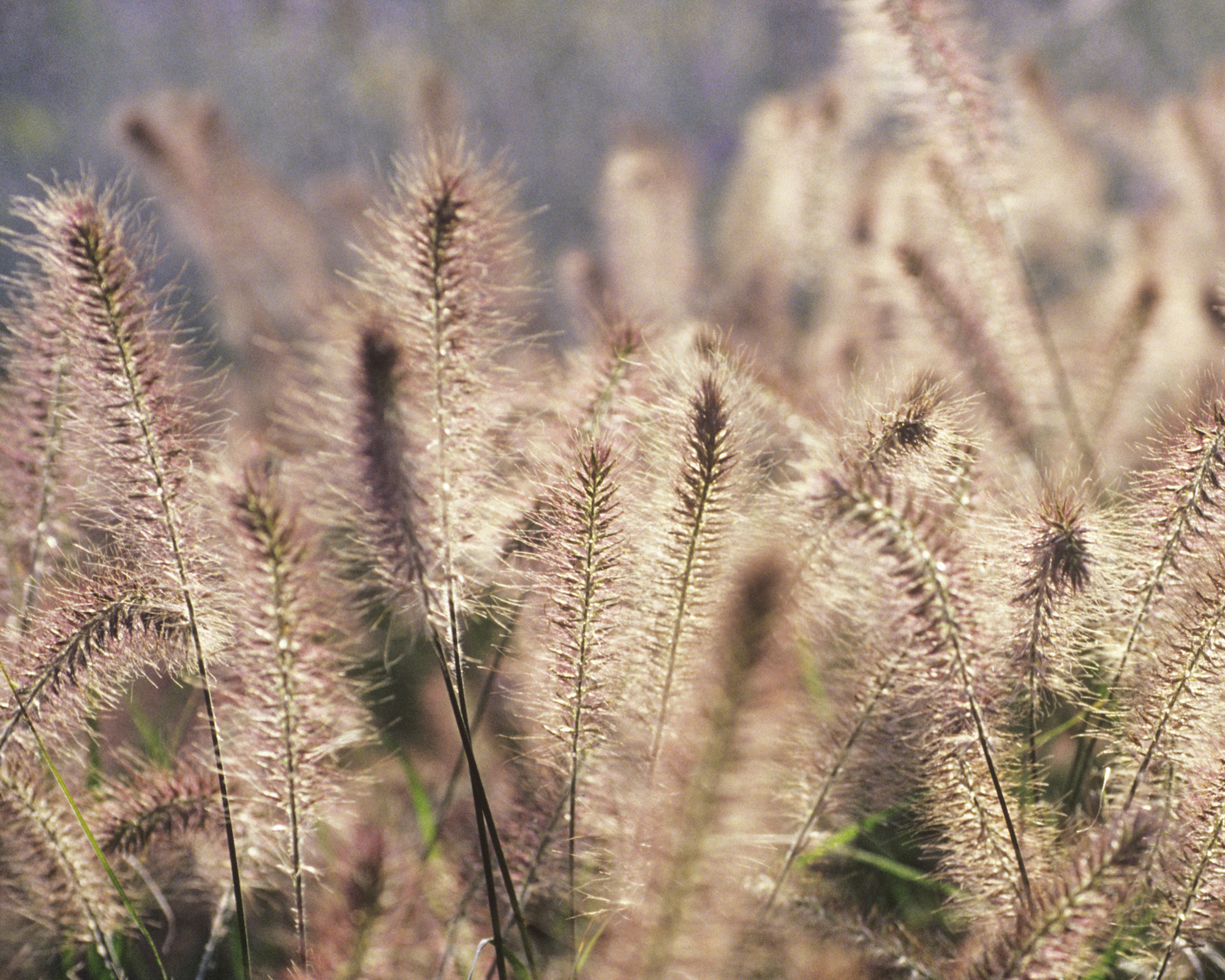
It’s also known as Chinese Fountain Grass, which is apt, because it has arching plumes, like a spray of water, with feathery flowers on top. The height and spread is 1.5m, which makes this a good plant to frame a seating area and provide some privacy at the same time. It likes full sun and a sheltered spot.
This clump forming plant is designated as an invasive species in certain areas of the USA, so it might be best confined to a row of garden planters rather than planted in the ground.
3. Miscanthus
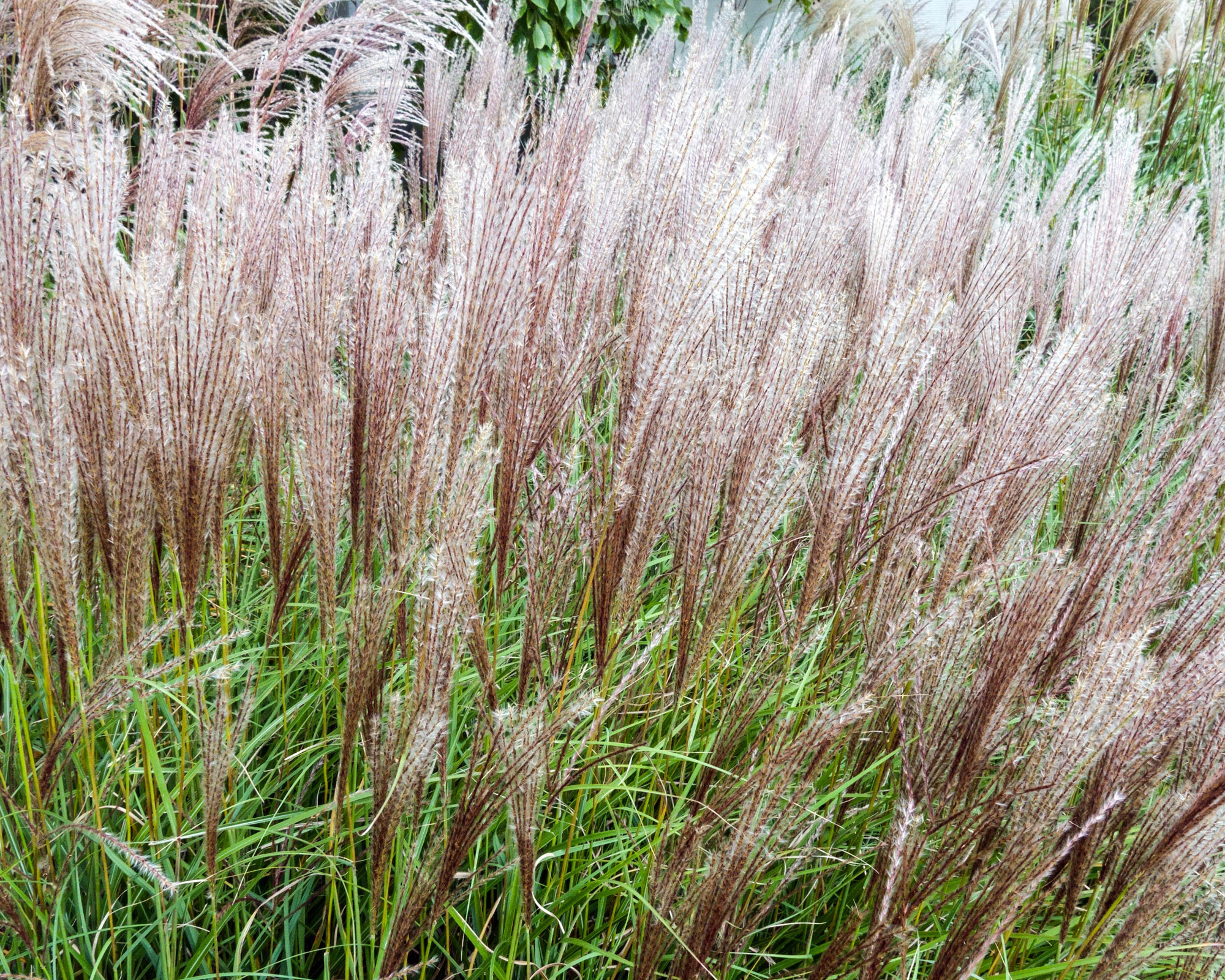
Miscanthus sinensis 'Kleine Silberspinne'
This is an easy grass to grow as it tolerates most soils (although it prefers full sun). It has exuberant fountains of foliage in early summer, and the color changes subtly through the seasons, bleaching to a pretty blonde in winter.
For a taller plant, try miscanthus sinensis ‘Undine’ which grows to 2.5m, or for a smaller choice, miscanthus sinensis ‘Kleine silberspinne’ which reaches about 1.5m.
Best screening plants for creating a semi-transparent screen
When you don’t want full coverage, but require partial concealment in your plot, try these go-to plants.
1. Verbena bonariensis
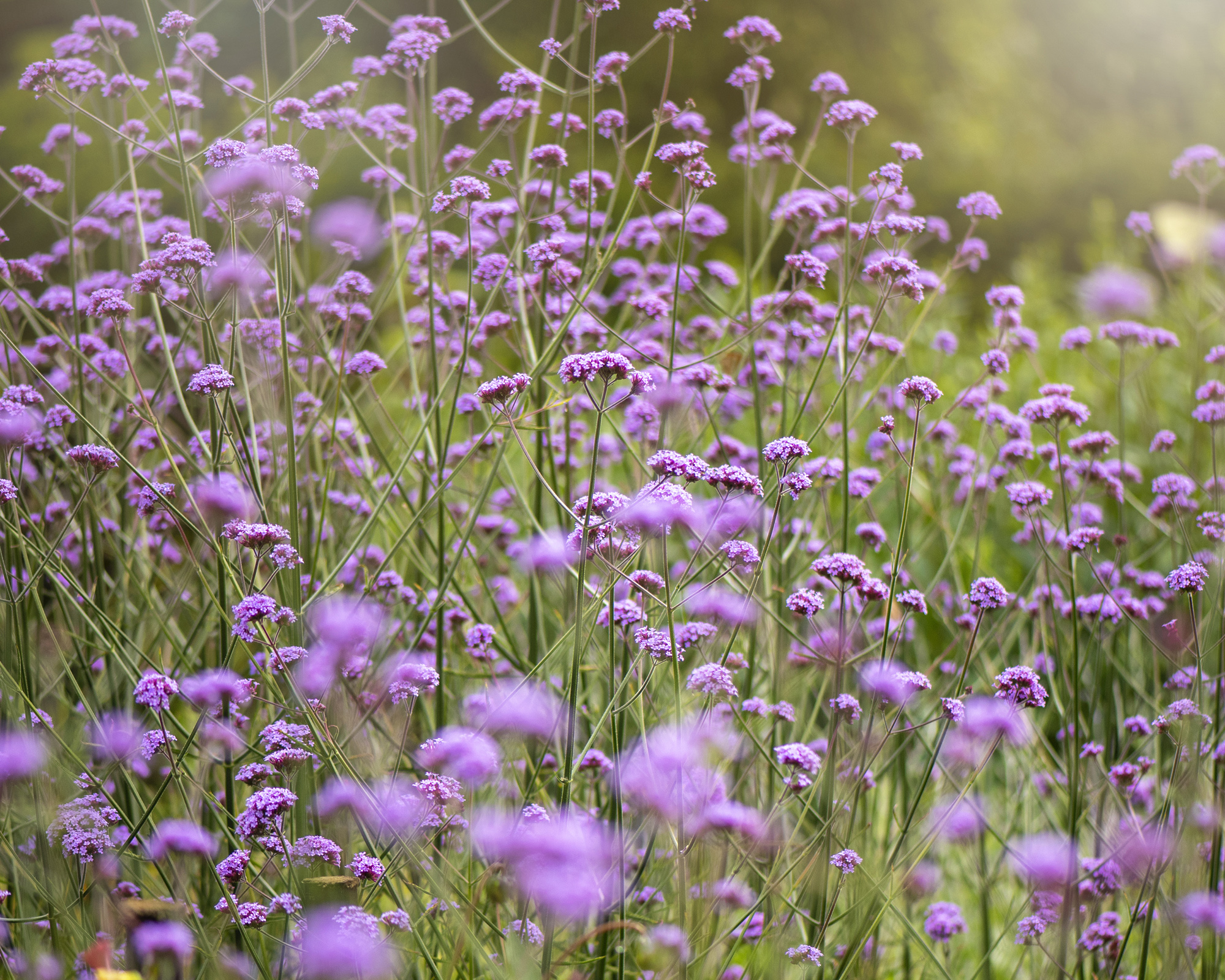
An upright perennial with skinny, criss-crossing stems and tiny purple flowers which are loved by bees and butterflies. The slim, elegant stalks create a lattice effect. They grow up to 2m tall and can be planted in a row where they will rocket away and become a beautiful veil in just one season (returning the next year).
You can either learn how to grow flowers from seed or invest in some small plants from the nursery or garden center. They will tolerate poor soil and dryer conditions.
2. Lavender
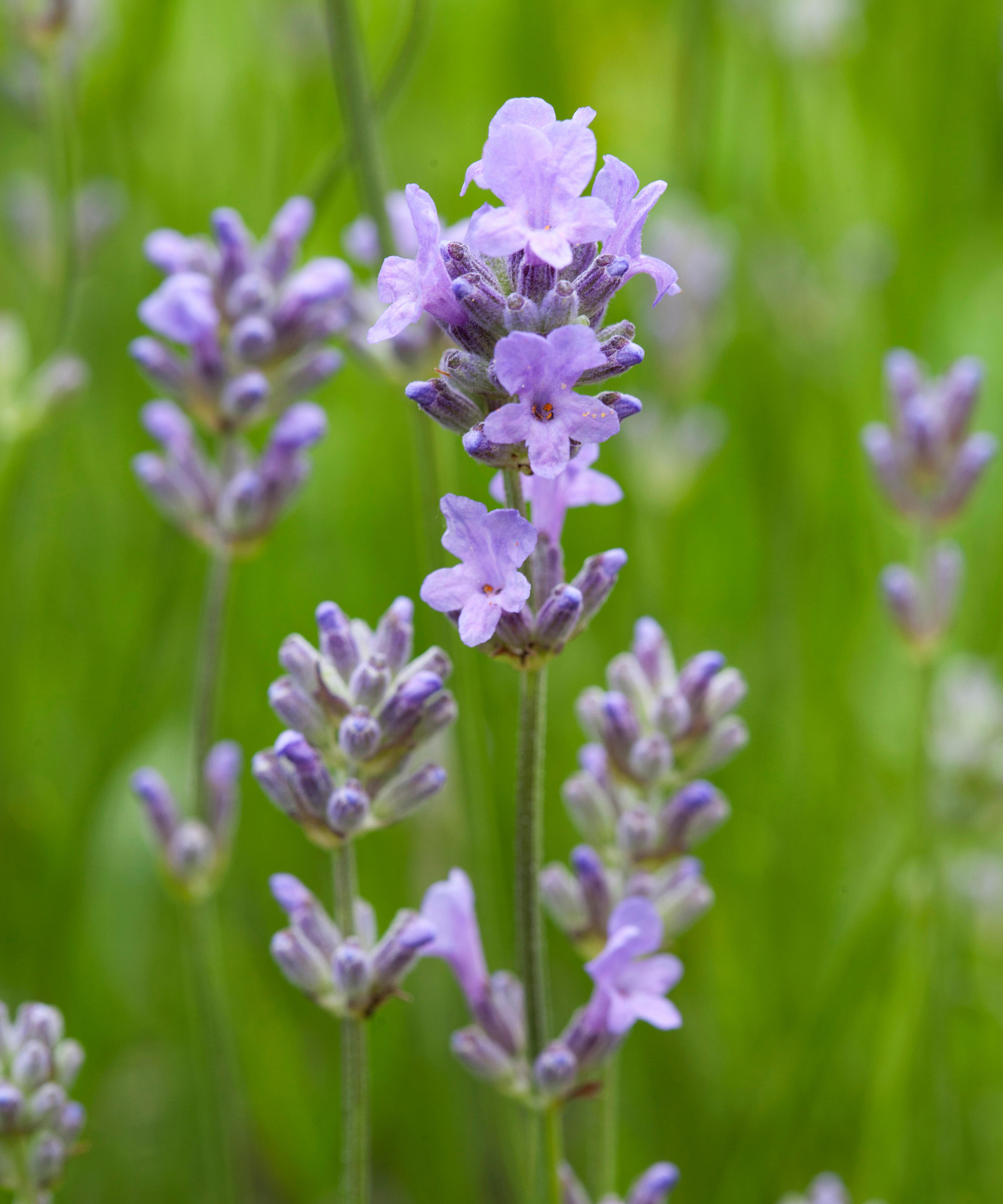
Lavandula x intermedia 'Hidcote Giant'
If you pick a tall variety of lavender and plant it as a hedge in a raised garden bed, it will create a see-through wall of scent and colour. Try Lavandula x intermedia ‘Hidcote Giant’ or Lavandula Intermedia 'Grosso’ both of which can top 1m in height. The flowers have lovely long, robust stems. Plant them about 30 cm apart.
Lavender is excellent for growing in drought or dry conditions, as it just needs watering regularly until it gets established. Trim the spent flowers back every summer so the bush can put on a bit of growth before winter. As you might know if you've read our guide on how to grow lavender, the plants may need replacing every 5-10 years.
Best screening plants for screening from above
If your garden is overlooked, it may be that you need some horizontal garden screening ideas to create a refuge from the eyes of curious neighbors. When teamed with the best screening plants, a pergola is the perfect way to create this effect.
1. Clematis
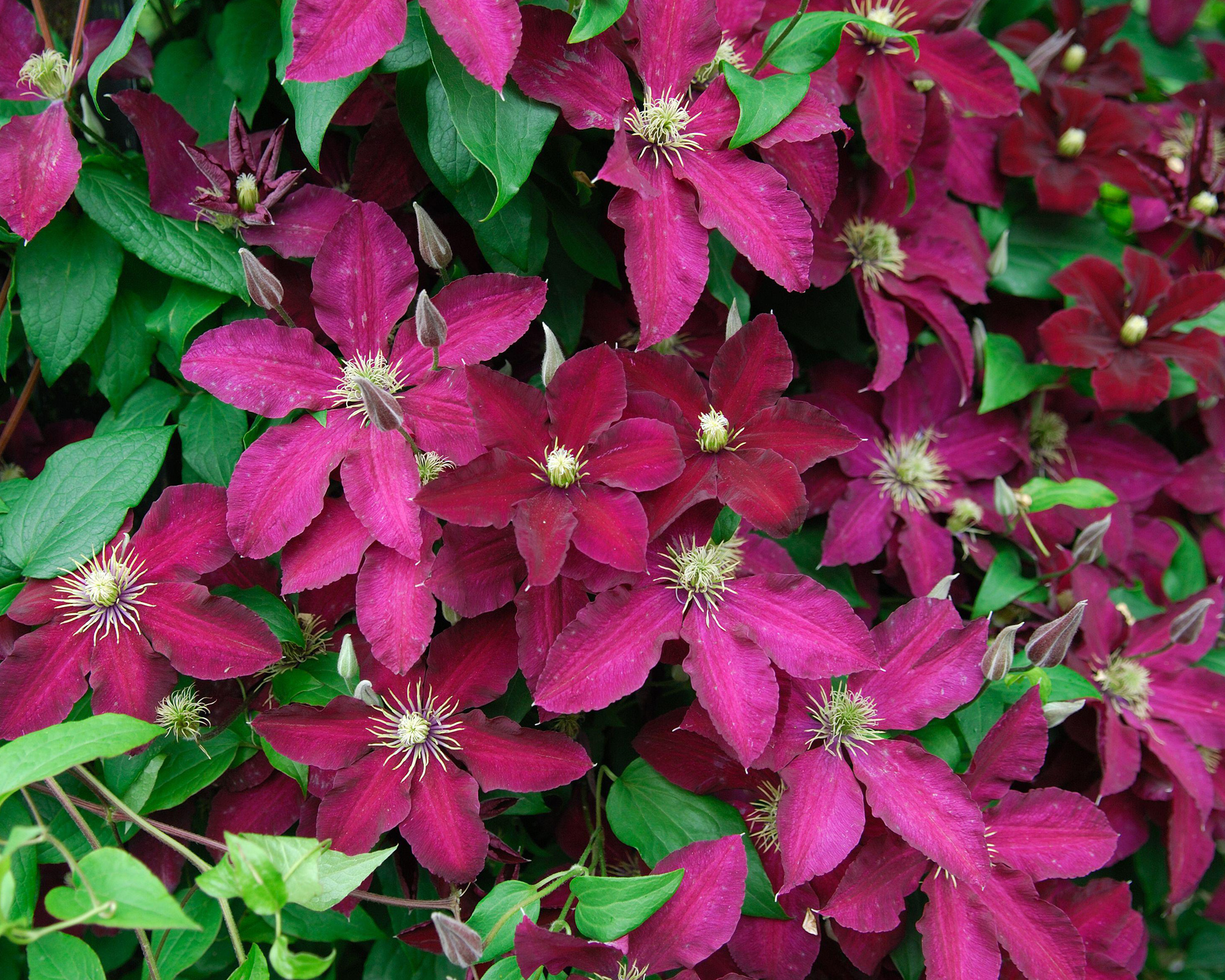
Clematis 'Ernest Markham'
A shady roof clad with big, beautiful flowers and thick foliage is exactly what you get if you plant a Group 3 climbing clematis. It needs a little help to achieve full thickness, so give it a trim in early spring and keep tying in the sides to create density.
Plant a couple of clematis on either side of the pergola and they will climb up and over the structure creating a perfect sense of seclusion. Try ‘Ernest Markham’ or ‘Mary Rose.’
Our guide on how to grow clematis has lots of info on the different types of clematis so you can ensure you choose the right one for your needs.
2. Rambling rose
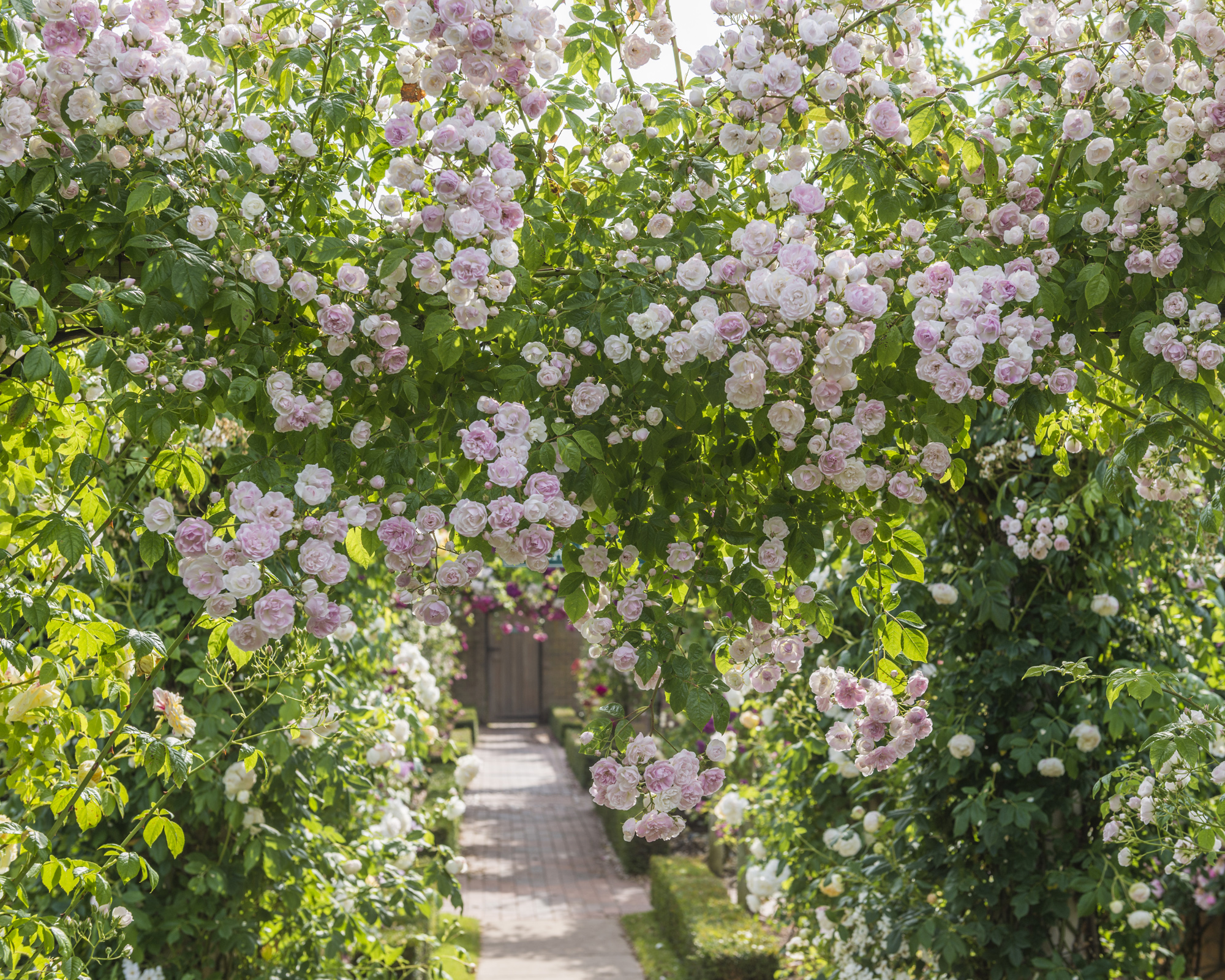
A rambling rose is one of the best types of roses to cover a garden wall, fence or a shed. It has small flowers in large sprays creating a mass of color. Rambling roses only produce only one flush of flowers a year lasting a couple of weeks, usually in early summer, and they will lose their leaves in winter.
There are so many varieties to choose from. A very tall one, reaching 7.5m is ‘Belvedere,’ which has small, pale pink flowers and a pretty scent.
How can you use screening plants to create privacy in a garden?
Privacy in overlooked gardens can be achieved by introducing wood or metal arbors, a gazebo or even some simple garden arch ideas where screening plants can scramble thickly overhead. These features are readily available online or at garden centers. Then it’s just a matter of choosing a fast growing screening plant to grow over them and you could be looking at some much-needed seclusion in just one to two years.
There's plenty of inspiration in our garden arbor ideas feature to help you find the right look for your space.
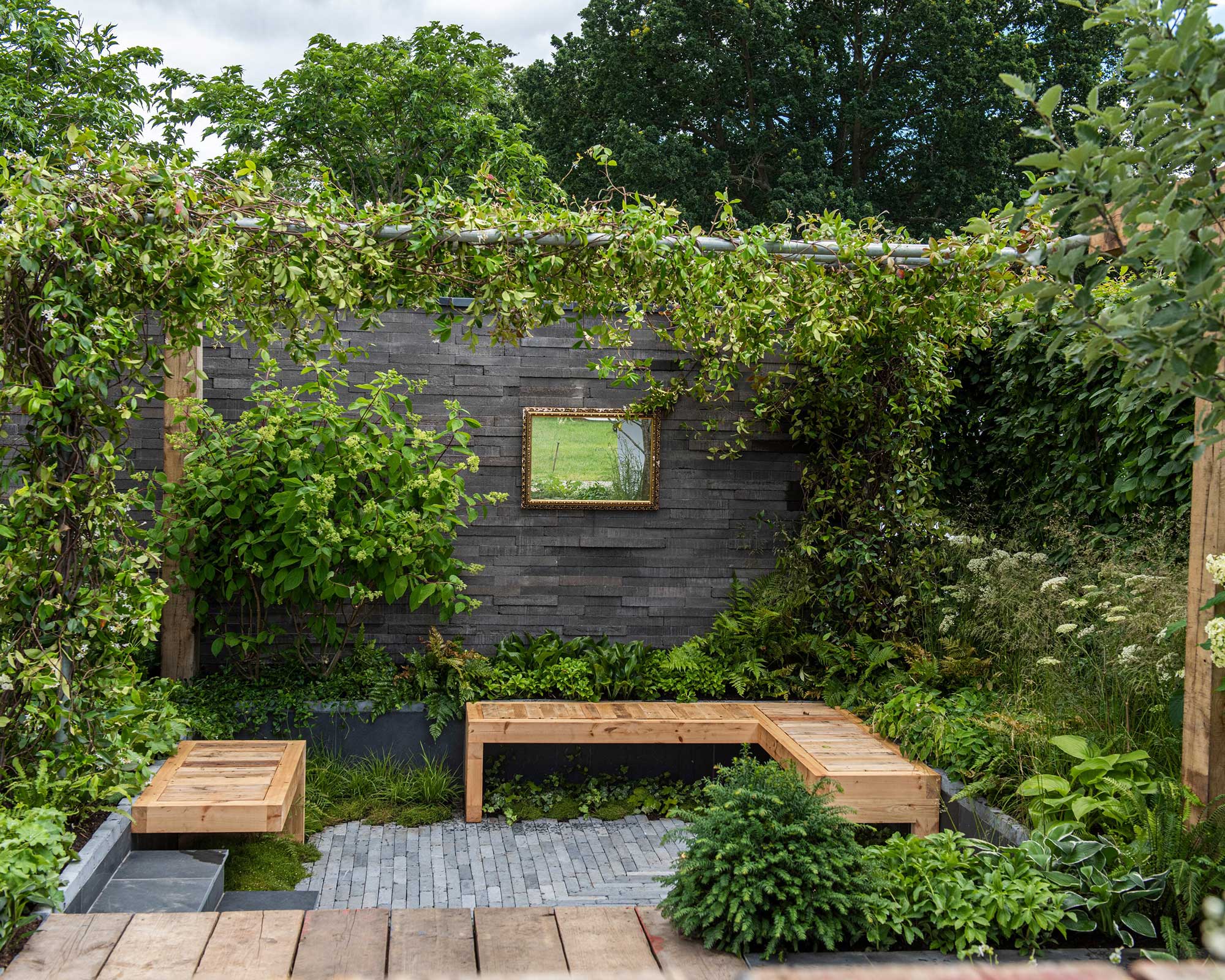
What are the fastest growing screening plants?
Bamboo, honeysuckle and Golden Hop are all good choices for fast-growing screening plants. Certain types of clematis (marked Group 3 on the plant label) will cover a trellis or pergola in quick time too if you cut the ends back in early spring to encourage thicker growth.
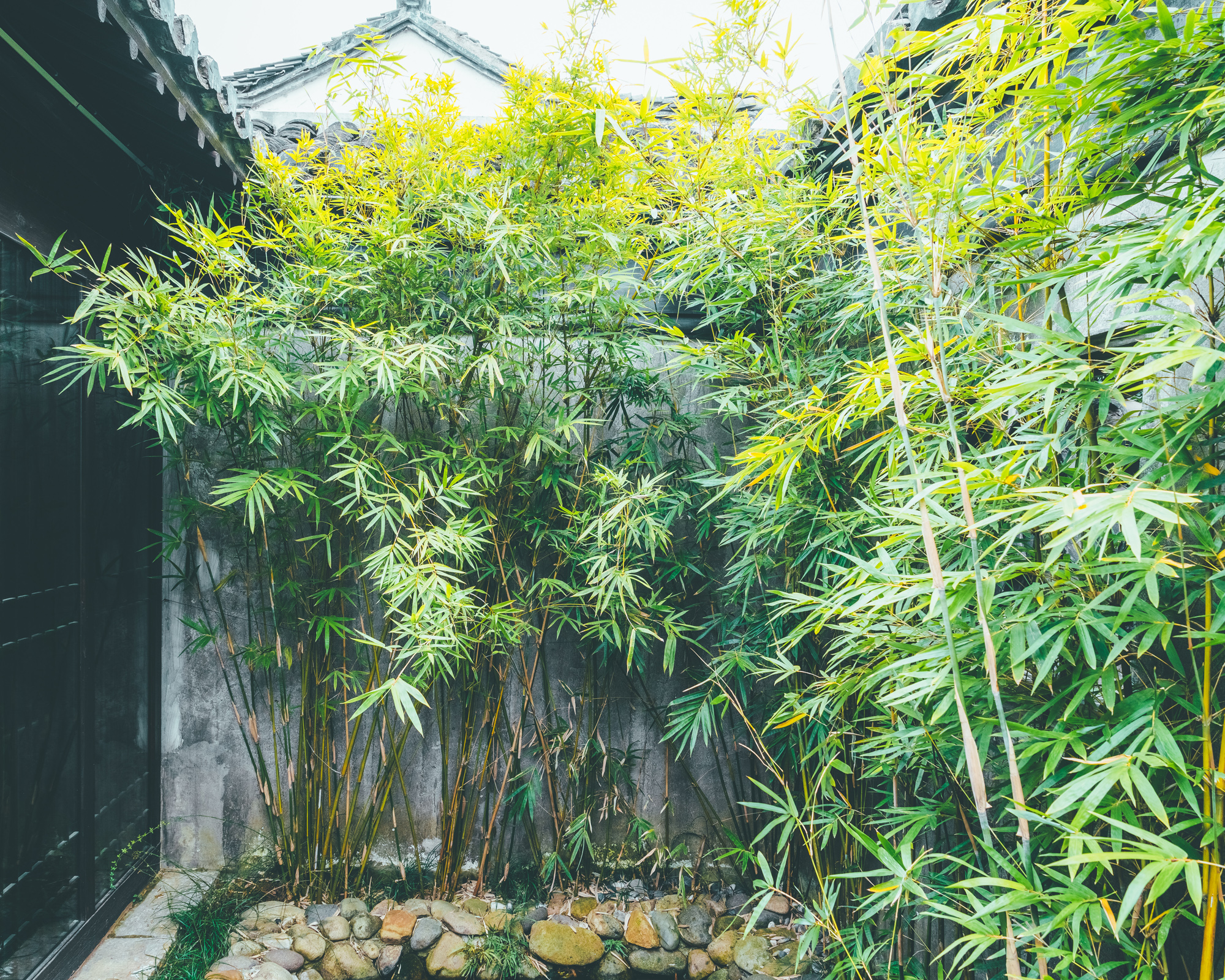
A row of bamboo plants can be an effective way of screening a garden wall
The dos and don't of choosing the best screening plants
Some of the best screening plants can be fast growers, but they may also become invasive, so before you choose which plants are suitable for your space, check the ultimate height and spread and make sure it is right for your plot.
If your aim is to create some effective privacy fence ideas and you're therefore planting near a boundary with a neighbor, avoid going for very large plants which could cause problems with invasive roots. These can block drains and soakaways, so it’s worth taking the time to ensure that your plants will not cause a dispute with anyone living next door to you.

An experienced freelance journalist, editor and columnist writing for national magazines and websites, Fiona now specialises in gardens. She enjoys finding and writing about all kinds, from the tiniest town plots to impressively designed ones in grand country houses.
